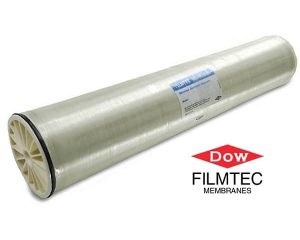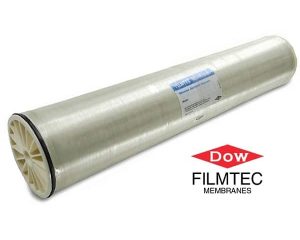Vontron RO Membrane 300 GPD
Product Description
Capacity : 300 GPD
Size : 12 inch
Make : Vontron
TDS : 2000 PPM
Description
Vontron RO membrane 300 GPD
The RO membrane are used to provide pure water and Vontron RO Membrane 300 GPD is used in 100 LPH RO Plant for better output. The company Vontron is a leading manufacturer for the RO membrane.
The 1812-sized and 2012-sized vontron RO Membrane is used for commercial and residential purposes. These membrane elements are of high quality and can be used up to 2000 TDS without any problem.
Scope :
This membrane is mainly applicable to various small-sized systems, such as household water purifiers and other water purifying devices in hospitals and laboratories, industries etc.
Vontron Membrane Specifications
2.Reject (%): 97
3. Average Permeate GPD(m3/d): 100(0.38)
4. Pressure psi(Mpa): 100(0.69)
5. Pecovery Rate(%): 15
Specifications and Major Properties
| Model | Active Membrane Area
ft2(m2) |
Average Permeated Flow
GPD (m3/d) |
Stable Rejection Rate (%) | Minimum Rejection Rate (%) |
| ULP2812 | 11.2(1.04) | 200(0.76) | 97 | 95.5 |
| ULP3012 | 13.2(1.23) | 240(0.91) | 97 | 95.5 |
| UL3020 | 24.1(2.24) | 420(1.60) | 97 | 95.5 |
Reverse osmosis (RO) is a water purification technology that uses a semipermeable membrane to remove ions, molecules, and larger particles from drinking water.
In reverse osmosis, an applied pressure is used to overcome osmotic pressure, a colligative property, that is driven by chemical potential differences of the solvent, a thermodynamic parameter. Reverse osmosis can remove many types of dissolved and suspended species from water, including bacteria, and is used in both industrial processes and the production of potable water.
The result is that the solute is retained on the pressurized side of the membrane and the pure solvent is allowed to pass to the other side. To be “selective”, this membrane should not allow large molecules or ions through the pores (holes), but should allow smaller components of the solution (such as solvent molecules) to pass freely.
In the normal osmosis process, the solvent naturally moves from an area of low solute concentration (high water potential), through a membrane, to an area of high solute concentration (low water potential).
The driving force for the movement of the solvent is the reduction in the free energy of the system when the difference in solvent concentration on either side of a membrane is reduced, generating osmotic pressure due to the solvent moving into the more concentrated solution. Applying an external pressure to reverse the natural flow of pure solvent, thus, is reverse osmosis. The process is similar to other membrane technology applications.






